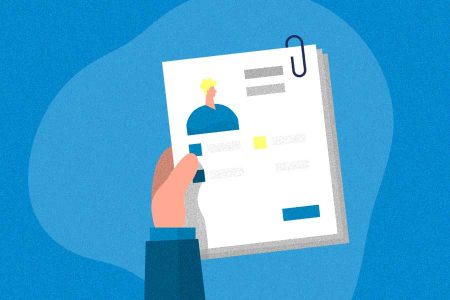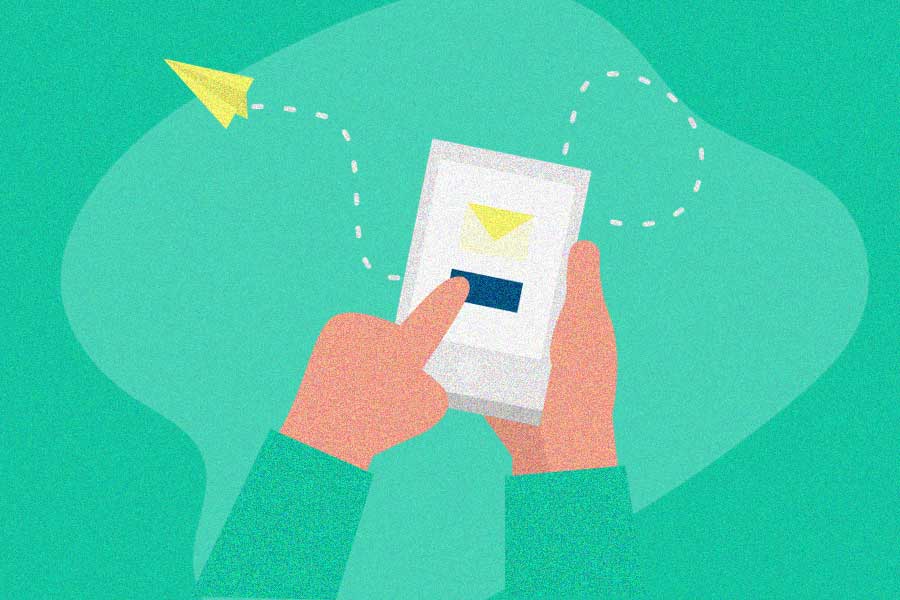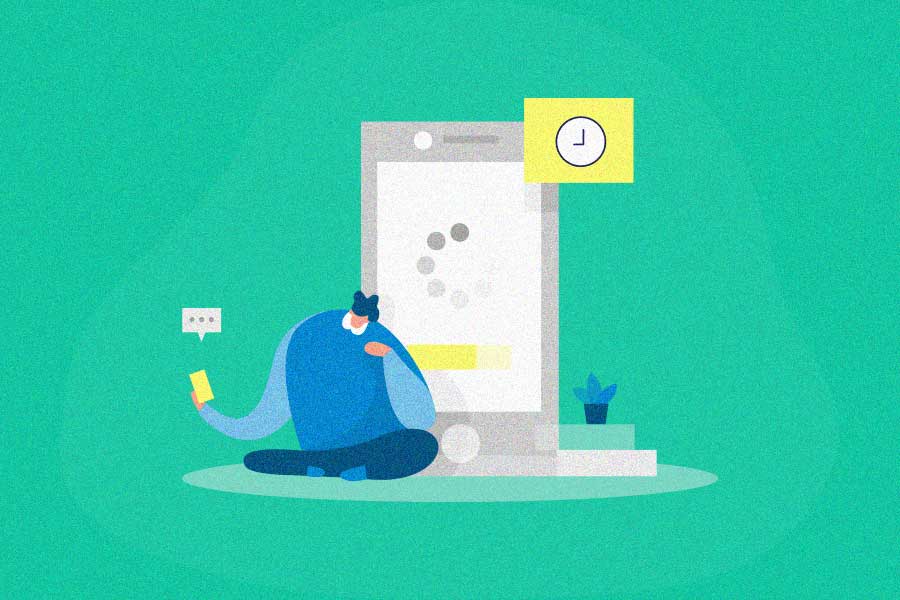It certainly isn’t a stretch to call customer loyalty a defining precursor to long-term success. But how do you achieve this kind of unfailing loyalty among your customer base? Even more important, how do you even know where you stand on the customer loyalty scale?
These dilemmas have the same solution: customer loyalty analytics.
Customer loyalty analytics do more than just show how loyal your customers are. It can also help you boost customer retention rates, reduce customer churn, and increase referrals. In this post, we will show you how. Think of this as a nifty primer on how to make the best use of customer loyalty analytics.
We will also dig into the key metrics that can help you track customer loyalty and look at some steps you can take once you know how to measure customer data.
Defining customer loyalty analytics
Customer loyalty analytics aims to find out how loyal customers are to a business or a brand. It achieves this by collecting data on customer behavior, analyzing it, and identifying patterns and trends by attaching a numerical value to it.
It’s important to note that loyalty goes beyond retention, though. It involves both the likelihood of someone to stay your customer, and the likelihood they’ll recommend your brand to friends.
Employing customer loyalty analytics has a two-fold objective:
- Turning new customers loyal to your company.
- Keeping tabs on customer behavior to track loyalty among your existing customers.
When done correctly, customer loyalty analytics will give you a pretty good indication of how loyal your customers are to you, and how likely they are to recommend your brand to their friends, families, and on social media.
The importance of loyalty analytics in business
Bain & Company found that a mere 5% increase in customer retention brings about a 25% increase in profits and a marked increase in your bottomline. When you are actively tracking your customer loyalty analytics and taking proactive measures, it can help you in several ways:
- You get a better understanding of customer behavior. Through metrics like customer retention rate and repeat purchase rate, you can glean quick insights about what’s clicking with your customer base and what isn’t.
- With the customer data that you have, you can get a pretty good idea of ways to improve customer satisfaction and increase customer engagement.
- Loyalty analytics also make the task of customer segmentation effortless. This can help you tailor your new loyalty programs – and referral programs – and retrofit your existing ones to appeal to different customer groups.
- Because you are always on top of your customer loyalty, thanks to its predictive analysis, you can quickly swap out marketing strategies and make changes to them.
- You’ll figure out how to drive more organic word-of-mouth growth to attract new customers.
- And finally, tracking customer loyalty analytics and acting on the insights can kick your brand’s reputation into high gear. Reportedly, 60% of all loyal customers recommend the brands they love to their friends and families.
Loyalty analytics vs. retention analytics: Understanding the difference
Several business owners wrongly believe that loyalty analytics and retention analytics are one and the same. No, they are not. Before we get to the meat of the matter, it’s vital to understand how the two concepts differ in practice.
Retention analytics help you figure out if your customers are satisfied with your product or service or if they are on the verge of leaving. But loyalty analytics goes deeper than improving customer interest and preventing customer churn—it’s more about an emotional connection that customers have with your brand.
Loyalty analytics is more than just numbers
Retention analytics is quantitative in nature, whereas loyalty analytics is qualitative. There is a deep-seated emotional and psychological connection between a company and its loyal customers, and loyalty analytics aim to tap into that and amplify it.
While retention analytics is great for tracking retention numbers, it cannot be used to influence customer behavior in the way that loyalty analytics can.
Loyalty analytics can help establish deeper relationships
Consistent referrals can be the strongest testament to customer loyalty.
Apple is perhaps the best case study that shows the importance of deeper relationships with customers. The loyalty rates among Apple consumers have always surpassed 90% in the last few years. This signals another key distinction between loyalty analytics and retention analytics.
The endgame of customer loyalty analytics is not just to get your customers to come back, as is the case with retention analytics. The objective is also to turn them into vocal brand advocates who can bring you more customers through referrals and recommendations. Because – as a Nielson study found out – nine out of ten customers trust references from people they know.
Let’s look at some key metrics in customer loyalty analytics.
Key metrics in customer loyalty analytics
The success of your customer loyalty analytics depends on how well you can interpret the vast pool of customer data. Following are eight key metrics that you need to measure to make the most of your customer loyalty analytics:
1. Retention rate
The customer retention rate is the percentage of customers your company manages to retain over a certain period of time. The retention rate is a pretty good indicator of how satisfied your customers are with your product or service.
A high retention rate means that most of your customers are satisfied, and a low retention rate implies a problem with the customer experience that needs to be resolved as soon as possible.
2. Customer lifetime value
Customer lifetime value, or CLV, is the total revenue a customer brings you over the entire period of their relationship with your company. CLV can be measured in terms of historic value (revenue a customer has already brought in), or predictive value (including the value they’re expected to bring in the future). You can also calculate an average lifetime value for all your customers.
CLV is an effective metric that tells you the satisfaction levels of your repeat customers. When you have a high customer lifetime value, it means that your repeat customers are satisfied with the quality of your service, which drives their loyalty towards you.
3. NPS score
The NPS, or Net Promoter Score, is one of the eight effective metrics to understand customer loyalty. NPS provides incredible insights into customer sentiment and loyalty. Introduced by Bain & Company in 2003, the NPS score has become the go-to method for several companies to measure customer loyalty.
NPS is calculated by conducting an NPS survey among customers. The survey asks customers how likely they are to recommend your product to others on a scale from 1 to 10. The responses are then segmented into three groups:
- Customers who give a score of 9-10 are called promoters.
- Customers who give a score of 7-8 are called passives.
- And those who give a score of 6 or lower are called detractors.
The difference between the percentage of promoters and detractors is your Net Promoter Score. The higher your NPS, the more satisfied and loyal your customers will be.
4. Customer satisfaction score
While NPS is effective at finding out the level of customer loyalty, it may not present the best benchmarks for gauging customer satisfaction. For that, you need to calculate customer satisfaction (CSAT) scores through CSAT surveys.
A CSAT survey works similarly to an NPS survey, but here, you ask customers to rate how satisfied they were with a given experience. CSAT surveys focus on specific aspects (product, after-sales service, customer service, etc.) as opposed to NPS, which focuses on the overall brand or company.
5. Customer effort score
Another popular survey-based metric is the customer effort score or CES. Customer effort score shows how easy or hard it is for your customers to engage with your business. You can calculate the customer effort score for anything, ranging from navigating your website to raising a ticket with your customer service.
Customer effort scores complement NPS and CSAT scores by focusing exclusively on the effort part of the customer experience. Good scores on these three metrics are what really drive customer loyalty and turn customers into brand advocates.
6. Review scores
The next best thing after personal recommendations are ratings and reviews. When people shop around for a particular product or service on G2 or Trustpilot, almost all of them base their final purchase decision on review scores left by other customers. And that makes this another key metric in customer loyalty analytics. There is no better substitute for positive reviews and glowing recommendations.
Also, make sure to scope out feedback on social platforms, including Facebook, Instagram, Reddit, LinkedIn, and X (formerly Twitter) to better understand customer experiences. Sure, most of these platforms won’t tie this feedback to a star rating or numerical score, but you can always use brand mention tools and sentiment scoring to transform this qualitative analysis into something quantifiable.
7. Share rates
Share rates refer to the number of times customers share your information or your product via a referral program, or on social media. It gives you a clear-cut indication of customer loyalty, as customers typically share such information only when they are loyal and highly committed to your company.
8. Referral rates
Referral rates give you the percentage of total purchases made by referred customers. If your referral rates are low, it means that your customers may not be willing to recommend your company. But high referral rates mean customers are loyal enough to advocate on your behalf.
Improving referral rates involves two key steps – encouraging customers to refer more often and enticing the maximum number of referred leads to complete their purchases.
In most instances, improving referral rates are a sign that you’ve improved customer loyalty and impacted how customers feel about your company. And of course, your referral rate is a great way to determine the effectiveness of your referral program, if you have one in place.
Investigating loyalty metrics
Now that you understand all the key metrics involved, let’s look at how to investigate loyalty metrics. The most exciting aspect of using customer loyalty metrics is all the comprehensive insights that you can glean across multiple data points, such as individual customer information and demographic data.
Here is a snapshot of what becomes possible when you have robust data analytics in place:
Specialized analytics tools deliver actionable insights
Unless you run your customer loyalty data through the right set of tools, it’s not going to do much for your customer loyalty ambitions.
For instance, if you want to track and measure the effectiveness of your referral programs accurately, a referral marketing software is the best way to do it. Similarly, NPS software tools can track your Net Promoter Scores, and a CSAT program can monitor your CSAT scores.
Segmentation provides a deeper understanding
Customer loyalty trends can be more precisely understood when data is segmented based on various customer demographics. Segmenting customers by age, location, or purchase history helps brands understand their preferences and behaviors. This segmentation makes it possible to send tailored messages and use targeted marketing strategies, which makes customers more engaged and keeps them coming back.
Time-based analyses help with trend identification
Loyalty data analytics also have the ability to reveal seasonal fluctuations in customer loyalty trends. You can identify precisely when customer engagement or loyalty peaks and dips. With this information, your company can then adapt its marketing strategies to align with trends. Optimizing your messaging and sharpening your content are some things you can do to improve customer loyalty.
You can compare metrics with industry benchmarks
Benchmarks serve as valuable reference points to evaluate the effectiveness of loyalty efforts. Customer loyalty analytics lets you compare your loyalty metrics with industry standards. Because you have a context for measuring your performance, you know exactly where you stand and what you need to do to bridge any gaps to match or even exceed industry standards.
Actionable steps from loyalty data
So now you have all the right customer loyalty data, you are tracking all your metrics well, and you have all the actionable insights. What do you do next?
Next, you act. You act quickly and decisively. Below are five actionable steps that you can take to improve customer loyalty:
1. Launch loyalty programs
Everyone loves rewards and incentives, and that also includes your customers. With accurate customer loyalty data in your arsenal, you know exactly which rewards will resonate the most with which customer group. You can roll out a loyalty program that offers personalized discounts, exclusive offers, or redeemable points when customers make purchases or perform other brand-building actions.
2. Design personalized customer experiences
Customers feel valued when you deliver personalized experiences to them. You can use customer loyalty data to come up with product recommendations and offers for individual customers based on their preferences and behaviors. A bond develops between them and your company over time, which is a stepping stone to long-term customer loyalty.
3. Enhance customer service based on insights
Feedback and interactions with customers are often included in loyalty data. This data helps brands identify customer pain points. Taking care of these problems quickly through better customer service shows that you care about making your customers happy. By proactively interacting with customers, you can turn potentially negative experiences into positive ones.
4. Reinvent product offerings or features based on customer suggestions
Customer loyalty programs collect information that can be used to better understand regular customers. Using this data, you can improve your existing offerings or create entirely new ones to meet consumers’ needs. And nothing solidifies customer loyalty more than a customer-focused approach.
5. Launch (or optimize) a referral program
A referral program encourages existing customers to recommend your brand to others in exchange for rewards or benefits. Loyalty data can identify customers who are most engaged and satisfied with your brand, making them ideal candidates to make referrals. An excellent referral program based on loyalty data insights will help you tap into the power of word-of-mouth marketing to both retain current customers and attract new ones.
Conclusion
No business can go the distance without loyal customers. Customer loyalty analytics not only help you track customer loyalty but also provide accurate insights to help you increase customer satisfaction and inspire long-term loyalty.
Looking for a way to create and measure referrals, the ultimate sign of customer loyalty?
Referral Rock is a powerful referral marketing software that can help you transform your loyal fans into powerful referral sources.

![Customer Loyalty Analytics: 8 Metrics to Track [Boost Retention and Referrals] 1 customer retention rate formula](https://referralrock.com/blog/wp-content/uploads/2023/09/customer-retention-formula.jpg)
![Customer Loyalty Analytics: 8 Metrics to Track [Boost Retention and Referrals] 2 Customer lifetime value](https://referralrock.com/blog/wp-content/uploads/2020/12/pasted-image-0.png)
![Customer Loyalty Analytics: 8 Metrics to Track [Boost Retention and Referrals] 3 calculate nps](https://referralrock.com/blog/wp-content/uploads/2023/09/calculate-nps.png)
![Customer Loyalty Analytics: 8 Metrics to Track [Boost Retention and Referrals] 4 csat example](https://referralrock.com/blog/wp-content/uploads/2023/09/csat-example.png)
![Customer Loyalty Analytics: 8 Metrics to Track [Boost Retention and Referrals] 5 csat vs nps](https://referralrock.com/blog/wp-content/uploads/2023/07/csat-vs-nps.png)
![Customer Loyalty Analytics: 8 Metrics to Track [Boost Retention and Referrals] 6 ces likert scale](https://referralrock.com/blog/wp-content/uploads/2023/07/ces-likert-scale.png)
![Customer Loyalty Analytics: 8 Metrics to Track [Boost Retention and Referrals] 7 review-sites](https://referralrock.com/blog/wp-content/uploads/2018/09/review-sites.jpg)



